Let The Bilastrator be the first to congratulate you on your uncommon good fortune, as The Bilas Index, Volume II is now available to you, a member of the general public. Now, you can not only make sense of the vast college hoops landscape, you will stand out among the hopelessly lost members of our society who attempt to process the college hoops universe without the benevolent help of The Bilastrator. You are well on your way to winning your office pool, friendly wagers and -- when discussing the game with others with the knowledge you now possess -- you will be seen as a god among mortals. We speak from experience in this area, using the "royal we" -- it is a wondrous feeling.
After the first third of the season is in the books and we begin conference play, there is a significant date for The Bilastrator's massive and magnificent gray matter to process. The data tells us what teams and players have accomplished to this point, but it does not necessarily tell us what said teams and players are capable of in the future. For that, we need, crave and deserve as a human right the analysis and basketball judgment of The Bilastrator. As Albert Einstein -- a quality thinker in his own right, but an inferior mind to The Bilastrator in the basketball realm -- once advised: "Have holy curiosity." Well, The Bilastrator has just that ... and more.
In this early season, we have witnessed some superlative play, both team and individual. Scoring is up, as is efficiency. We have seen upsets and Top 25 teams going down to unranked teams. Just like every season, the uninformed seem perplexed, as if ranked teams always won in the past. It could be that football, where a loss is disqualifying to nearly all teams but Alabama, has poisoned uneducated minds into thinking that basketball teams should be perfect in a far different game. The best teams are the most consistent, but it does not mean that all are not subject to taking a loss on a given day. Purdue lost at Northwestern. Florida Atlantic lost to Bryant. Kentucky lost to UNC Wilmington. It happens in basketball, and it has always happened in basketball. Still, some teams have played incredibly difficult schedules (see Alabama, Arizona, Purdue), while others have had less challenging starts (see Ole Miss, South Carolina). The Bilas Index, Volume II helps you cut through simple records and statistics to determine the contenders from the pretenders.
Yet, there are clear signals as to which teams have shown the capability to contend for a Final Four spot, or a national championship. Purdue, Arizona, Connecticut and Houston have stood out as favorites, but Florida Atlantic and Kansas stand out as teams that can beat anyone and are dangerous, but for different reasons. See below for those compiling reasons.
In every sphere of engagement with that beautiful game of basketball, The Bilastrator has risen to shift the paradigm of understanding of all that does and can occur on the hardwood, and has done so through challenging conventional thinking that has become so common -- yet debilitating -- to the game and those that play it. The Bilas Index provides you, one of masses, the ability and advantage to see things from an elevated basketball perspective. The Bilas Index is not just educational and creative -- it is visionary. This cerebral exploration of the game is based upon the superior mental capacity of The Bilastrator and his basketball brain, and the incredible efficiency of his gray and white matter and the rapid conduction of nerve signals, allowing him to process the quality of teams and players beyond the comprehension of mere mortals.
To you, for your basketball journey, we present you The Bilas Index, Volume II. As always, you're welcome.
My top 5 college basketball venues are... pic.twitter.com/Q1xNSdYWjv
— Jay Bilas (@JayBilas) January 3, 2024
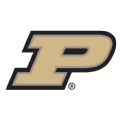
1. Purdue Boilermakers: This is the nation's best team. The Boilermakers have challenged themselves, playing one of the nation's toughest schedules. And, Purdue has a weapon no other team features: the size and skill of National Player of the Year Zach Edey. Edey had high expectations, and he has met and exceeded those expectations. Behind Edey, Purdue has beaten Gonzaga, Tennessee, Marquette, Alabama, Arizona, Xavier and Iowa, which would be a solid, full-season résumé. Yet, all of these wins were before the ball dropped in Times Square. The big knock against Purdue last season was perimeter athleticism and guard play, both of which have been addressed and are a strength rather than a vulnerability. Lance Jones and Myles Colvin boost the fast twitch deficit of last year's Boilermakers, and guards Braden Smith and Fletcher Loyer are more efficient and productive playing off Edey. Purdue shoots over 39% as a team from deep, ranking among the top-20 shooting teams in the country, and Purdue is one of the top-rated offensive teams in the country. It takes an incredible effort to beat this team. It can be done, but Purdue isn't scared.
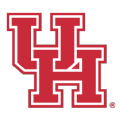
2. Houston Cougars: The Cougars are the best overall defense in college basketball, leading the nation in scoring defense and field goal percentage defense, and nothing is easy or given. Houston has beaten Utah, Dayton, Xavier and Texas A&M but has not played a murderers' row just yet. That will change when Big 12 play gets fully underway. The loss of Terrance Arceneaux for the season with a torn right Achilles is a major blow, but Houston still has L.J. Cryer and Emanuel Sharp as the top scoring threats and the two guys you cannot foul. The remainder of the roster ranks outside of the top 300 in free throw percentage. The Cougars' defense will always keep Houston in a position to win games. Only improvement in shooting and scoring around the lane will keep Houston in position to challenge for a Big 12 title and a national championship.
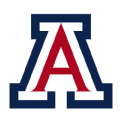
3. Arizona Wildcats: While everyone freaks out over Arizona's loss to Stanford, remember that the Wildcats have played a ridiculous schedule and boast a Top 5-rated offense and defense. Arizona is not dropping in The Bilas Index, because Arizona has beaten Duke at Duke. Michigan State. Wisconsin, Alabama and blew out both Colorado and Utah after getting clipped by Stanford. Keys this season have been pressure defense, consistent pace and the additions of Keshad Johnson, a jack-of-all-trades winner, and Caleb Love, a streaky shooter who hits big ones and has settled in and is in attack mode without sacrificing efficiency. Don't worry, Arizona will be there at the end of the season.
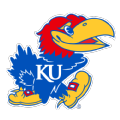
4. Kansas Jayhawks: The Jayhawks are simply amazing. From the jump, it has been clear that Kansas' title hopes rest with roster spots 5 through 8. Bill Self's top four players have been stellar, and Hunter Dickinson and Kevin McCullar Jr. have both been first-team All-Americans. McCullar has been the best two-way player in the country over the first half of the season. Yet, when you watch Kansas play and practice, one cannot help but wonder if and when the heavy load carried by the Phog Four will catch up to Kansas. It hasn't yet, and it has wins over Kentucky, Tennessee, UConn and TCU, with the only blemish being the Marquette loss in Hawaii. Kansas will get clipped in a few Big 12 games, but if the Jayhawks stay healthy and get significant improvement from Elmarko Jackson, Johnny Furphy and Jamari McDowell, this team will hang another Big 12 banner.

5. UConn Huskies: The Huskies have lost to only Kansas and Seton Hall (on the road) and have not had a healthy team all season. The key to a UConn challenge for the rare repeat championship is at the defensive end of the floor. The Huskies are good defensively and better than the numbers indicate. But this is a Top-5 offense whose defense is not yet championship caliber by itself. The good news is that Donovan Clingan is coming back, and there is still plenty of time in Dr. Hurley's laboratory. This season, I would rather have a potent offense, but UConn will continue to get better on the defensive end. If the defense becomes elite, UConn will be the best team.

6. Tennessee Volunteers: The Vols and Houston are the two best defensive teams in America. Tennessee has size, length and depth on the defensive end, and everything is difficult when trying to run offense against this team. A key has been the return of Zakai Zeigler, who has been playing more and is looking more and more confident. Ziegler's disruptive ball pressure and distribution are vital for the Vols to win the SEC and reach a Final Four. Rick Barnes has more offensive firepower this season with Dalton Knecht and a healthy Josiah-Jordan James playing well. Tennessee has beaten Wisconsin at Wisconsin, Illinois (with Terrence Shannon Jr.), NC State and pummeled previously unbeaten Ole Miss.
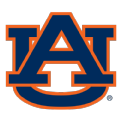
7. Auburn Tigers: The Tigers have quietly proved to be a major contender for the SEC title and a threat to reach a Final Four. Auburn is one of three teams with a Top 10-rated offense and defense, along with Purdue and Arizona (with Houston right there with that group). Aden Holloway is one of the most exciting players in the country, the bench is deep, and Johni Broome has been an All-America and SEC Player of the Year favorite. Auburn has won eight straight games by double figures after losing on the road to Appalachian State.
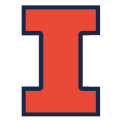
8. Illinois Fighting Illini: The loss of a player the caliber of Terrence Shannon Jr., who was playing like a first-team All-American before the rape charge, would seem to crush Illinois' hopes to challenge for the Big Ten title. But the Illini are still capable going forward. Brad Underwood has a really good offensive rebounding team that has versatility and the ability to create and exploit matchup advantages. Coleman Hawkins. Marcus Domask and Quincy Guerrier are capable of carrying more of a load, and will have to. Will the loss of Shannon be limiting? Of course. But the ceiling is still pretty high.
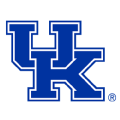
9. Kentucky Wildcats: If Kentucky defends and rebounds, this is the fastest team in the country. The Wildcats are deadly in transition, whether after a make or a miss. John Calipari has a group of players who can all dribble, pass and shoot, and this young team takes care of the ball like few others Cal has had in Lexington. The Wildcats are second in the nation in assist-turnover ratio and turnover percentage, and they lead the SEC in fewest turnovers and turnover margin. Antonio Reeves has been consistently spectacular, and Tre Mitchell has been Kentucky's most valuable player. As Justin Edwards improves and becomes more comfortable and big guys Aaron Bradshaw and Ugonna Onyenso get more minutes, Kentucky will contend. The young Wildcats grew up in the second half on the road at Florida, winning a game where most young teams would have crumbled.

10. Duke Blue Devils: With wins over Michigan State and Baylor, Duke has shown itself to be capable. This is not a knockout punch team, and it has not yet shown the chops to win consistently on the road, with losses at Arkansas and Georgia Tech. Still, Duke has had a legit chance to win coming down the stretch in every game. Kyle Filipowski and Jeremy Roach have been outstanding, and Jared McCain is coming on. A key is Mark Mitchell, who struggled with teams playing off him early on. Since the loss at Arkansas, Mitchell has scored in double figures in every game, including averaging 22 points and 10 rebounds in wins against Syracuse and Notre Dame, shooting 15-for-22 from the field.
While there are more and more players entering the NBA Draft via non-college routes, here are some prospects from college to keep an eye on... pic.twitter.com/zqmPUeBVGj
— Jay Bilas (@JayBilas) December 18, 2023
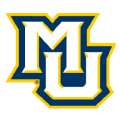
11. Marquette Golden Eagles: The Golden Eagles are small and lack rebounding strength, but they make up for it with disrupting on the defensive end. Marquette is again among the nation's leaders in forcing turnovers and turnover margin, and it boasts arguably the best and quickest backcourt in the country with Tyler Kolek, Kam Jones and the speedy Sean Jones. With a brutal schedule, Marquette will drop a few games, but wins over Kansas, Illinois, Texas and Creighton prove this team to be capable. As the tournament approaches, ask yourself how different Marquette appears from the Florida Atlantic team that advanced to the Final Four last season.

12. Alabama Crimson Tide: The Crimson Tide have played an NBA-caliber schedule this season and have tested themselves like few other teams in the country. Rated the top offense in the nation, Alabama scores efficiently from all three levels, but it has not proved to be a stingy defensive team, and the Tide put opponents on the foul line too much. But this is a capable team with good guard play from lefty Mark Sears (leading the SEC in scoring) and Aaron Estrada.
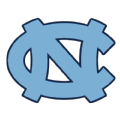
13. North Carolina Tar Heels: The Tar Heels have double-digit wins over Arkansas, Tennessee, Oklahoma and Clemson, and they rank in the top 20 in both offensive and defensive efficiency. This is not a knockout punch team, but this team is very good with the chance to get significantly better. RJ Davis has been spectacular, leading the ACC in scoring and free throw shooting. His high-level consistency has been remarkable. This is not a crazy-deep team nor is it the powerful rebounding team we have come to expect in Chapel Hill, but don't be surprised if the Heels win the ACC.
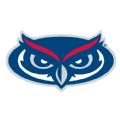
14. Florida Atlantic Owls: At its best, FAU is a Top 10 basketball team. The Owls have beaten Butler, Texas A&M, Virginia Tech and Arizona, but they have also lost to Bryant, Florida Gulf Coast and Charlotte, all rated outside of the Top 100. Offensively, the Owls are fabulous and attack help as well as any team in the country. Johnell Davis has been an All-American, but big man Vlad Goldin is perhaps the most important player. Goldin needs to stay out of foul difficulty, because Florida Atlantic is better with him on the floor. The American Athletic Conference will provide more resistance to the Owls, but this team is capable of being better than last season's Final Four team.
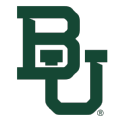
15. Baylor Bears: The Bears are outstanding on the offensive end and rank as the best and most efficient 3-point shooting team in the nation. However, this is not the same type of defensive team that Scott Drew took to a national championship in 2021. Baylor is not as disruptive as it needs to be, but the emergence of 6-11 freshman Yves Missi can help make a difference. Missi is an explosive shot-blocker and offensive rebounder who can anchor a defense and protect the rim. The Bears have a challenging but favorable start to Big 12 play, with most early challenges coming at home.
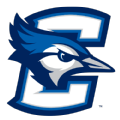
16. Creighton Bluejays: The Bluejays can score, and they do so from multiple positions. Creighton is top five in the nation in effective field goal percentage, and it is one of the most efficient finishing teams inside the arc. Among Trey Alexander, Baylor Scheierman (leading the Big East in scoring and 3-point field goals made), Mason Miller and Steven Ashworth, Creighton has multiple shooters who stretch a defense. Creighton leads the Big East in 3-point percentage and 3s made at 10.6 per game. The Bluejays are not a turnover-forcing team on defense, although Creighton is not easy to score upon, ranking last in the Big East in turnover margin and turnovers forced. Creighton defends the 3-point line and has Ryan Kalkbrenner helping to protect the rim. With victories over Alabama and Nebraska, Creighton has some good wins. The only head-scratcher was the loss to Colorado State, when Creighton scored only 48 points.

17. San Diego State Aztecs: The beat goes on. San Diego State has beaten Saint Mary's, Washington, Stanford and Gonzaga at Gonzaga, and it is headed to another Mountain West title in a season in which the MWC likely will have five NCAA tournament teams. The Aztecs have another top 20-rated defense and have been able to rely upon guards Lamont Butler, Reese Waters and Darrion Trammell to make plays. The best player has been Jaedon LeDee, the former Ohio State recruit who is averaging 21 points and almost 9 rebounds per game, while getting to the foul line for almost eight attempts per game.

18. Miami Hurricanes: Despite a lack of size and overall depth, the Hurricanes are one of the premier shot-making teams in the country. Whether Wooga Poplar, Nijel Pack or the uber-talented freshman Kyshawn George, Miami moves the ball and fearlessly attacks matchups like few others. When fully healthy, Miami is a tough out. However, when foul trouble or player availability is an issue, Miami can have some trouble. Miami is the top 3-point shooting team in the ACC, and the Hurricanes don't miss from the foul line. The key performer is Norchad Omier, the undersized but incredibly strong big man. When Omier is on the floor, nobody can push around Miami. When he sits with fouls, the Hurricanes are vulnerable guarding the paint.
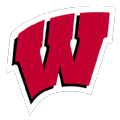
19. Wisconsin Badgers: If judged by performance in losses, Wisconsin would have a lot to explain. The Badgers were beaten by Tennessee at home and badly outplayed at Providence and Arizona. But this same Badgers roster took apart Virginia, Marquette, Michigan State, SMU, Iowa and Nebraska -- all by double digits. Wisconsin scores easily, but it needs toughness and togetherness on defense to challenge in the Big Ten. Wisconsin is 12th in the Big Ten in field goal percentage defense. AJ Storr has been Wisconsin's best player, but this group can take turns leading in scoring.

20. Michigan State Spartans: The Bilas Index has not given up on the Spartans. This team was highly rated out of the gate for a reason. The record does not support a Top 25 ranking, but the overall numbers and trends do. Starting with the utter dismantling of Baylor, Michigan State has won six straight headed into a road game at Northwestern, and the defense and big men are playing at a different level and pace compared to the 4-5 start. Tyson Walker has been fantastic all season long and very consistent. Lately, Jaden Akins and Malik Hall have performed better, and the Spartans are attacking in transition much more.
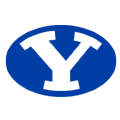
21. BYU Cougars: The Cougars play a "five out" offensive system that is difficult to guard and takes advantage of BYU's versatile and skilled players. While this team can score, even though it does not get to the foul line much, BYU is a very solid defensive team that limits opponents to one shot and does a good job forcing "tough 2s." With losses only to Utah on the road and Cincinnati in a game in which the Cougars could only muster 60 points, BYU is a solid, upper-division Big 12 team.

22. Nevada Wolfpack: Nevada is a very good team that probably hasn't received the respect it deserves ... yet. Nevada has high-level guards, especially on the defensive end, in Jarod Lucas and Kenan Blackshear. Lucas is the 3-point shooter who gets to the foul line, while Blackshear scratches in almost every category on a stat sheet. Nevada has beaten Washington, TCU and Georgia Tech. In the crazy-tough Mountain West, the question will be whether offense or defense will carry the day. Even when you can defend, you still need to put points on the board.

23. Wake Forest Demon Deacons: The Demon Deacons had injuries and player unavailability early on, and they lost games to Georgia, Utah and LSU as a result. Since then, Wake Forest is playing like the team The Bilas Index expected prior to the season. Gonzaga transfer Hunter Sallis has been excellent over the Deacons' recent nine-game winning streak, which included wins over Florida, Rutgers and Miami.
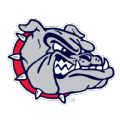
24. Gonzaga Bulldogs: The haters, and Gonzaga has a few, are saying that the Zags have already lost four games and should be dismissed. Please. Gonzaga lost to Purdue, got clipped late at Washington, and lost to last year's national championship game participants, San Diego State and UConn. Is this Mark Few's best team in Spokane? Perhaps not. But this team is fully capable of keeping Gonzaga's Sweet 16 streak alive. This has not yet proved to be a great perimeter shooting team, but Ryan Nembhard, Nolan Hickman and Dusty Stromer can shoot it. A key will be Gonzaga running better offense and getting the shot it wants more often.

25. Colorado State Rams: While San Diego State and Nevada are the two best defensive teams in the Mountain West, Colorado State is the best offensive team. The Rams average over 83 points and lead the MWC in scoring, assists, field goal percentage, free throw percentage, and are second in three-point percentage and 3s made. Colorado State is not a big team nor a great rebounding team, but any team with Isaiah Stevens can hang with anyone. Stevens is averaging more than 17 points per game and leading the MWC at 7.4 assists. Colorado State has beaten Creighton, Colorado, Washington and New Mexico, and has several high value games in the Mountain West. This is an NCAA tournament team.
5 players who outperformed their NBA Draft position... pic.twitter.com/WCPkktGVNr
— Jay Bilas (@JayBilas) January 5, 2024
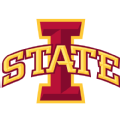
26. Iowa State Cyclones: It's not a secret how deep and strong the Big 12 is. The 14-team conference has only one team, West Virginia, below .500. The Cyclones -- ranking in the top 10 in defensive efficiency -- are a deep team with four players averaging in double figures in points (Tamin Lipsey, Keshon Gilbert, Milan Momcilovic and Tre King). Lipsey, a sophomore guard, also leads Iowa State in rebounds, assists and steals.
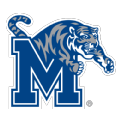
27. Memphis Tigers: Memphis hit a speed bump earlier in the season when it dropped back-to-back games against Villanova and Ole Miss. The Tigers -- along with Florida Atlantic -- look to be the class of the American Athletic Conference, and the two meet in late February and early March. David Jones, the Tigers' senior forward, leads the team in points (20.7 PG), rebounds (6.7 PG) and steals (2 PG).

28. Oklahoma Sooners: Le'Tre Darthard was a difference-maker in the Sooners' win over Iowa State to start Big 12 play. The Utah Valley transfer came off the bench to hit three 3s and score 11 points in a quality win as Oklahoma continues to bounce back from its only loss of the season to North Carolina. The Sooners -- who are deep and consistent -- play Kansas on Saturday.
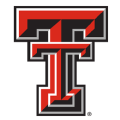
29. Texas Tech Red Raiders: The only two losses the Red Raiders faced over the first two months of the season were to tough Big East competition (Butler and Villanova), and a win against Michigan in between helped soften the blow. The Big 12 schedule doesn't do anyone any favors, so the backcourt of Pop Isaacs (16.2 PPG) and Joe Toussaint (14.4 PPG) will be key for Texas Tech as it tries to return to the NCAA tournament.

30. Clemson Tigers: The Tigers looked formidable in the early going before back-to-back, double-digit losses against Miami and North Carolina. Before those two losses, the Tigers -- behind the scoring and rebounding of PJ Hall -- were the highest ACC team in the NET rankings.
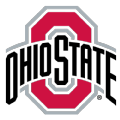
31. Ohio State Buckeyes: Ohio State was on a roll with wins over UCLA, West Virginia and Rutgers before dropping an away game to Indiana -- a game in which the Buckeyes forced just four turnovers. Bruce Thornton, Jamison Battle and Roddy Gayle Jr. carry the minutes load, with Battle -- a senior forward -- shooting over 45% from 3-point range.
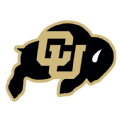
32. Colorado Buffaloes: Guard KJ Simpson has Colorado out to an 11-4 record behind 20.5 PPG while shooting 45% from 3 and averaging more than four assists and rebounds per game. Tristan da Silva is adding 15.8 PPG and 5.2 RPG for the Buffaloes this season as they navigate their final year in the Pac-12 before jumping back to the Big 12 next season.
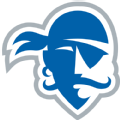
33. Seton Hall Pirates: It was an uneven nonconference schedule for the Pirates as four losses mounted up early on. That all changed Dec. 20 when Seton Hall kicked off Big East conference play with an emphatic 75-60 win over defending champion UConn. A 20-point loss at Xavier followed to even the Pirates' conference record, but they bounced back with wins over two ranked opponents (Providence and Marquette).
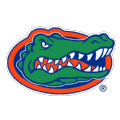
34. Florida Gators: All three of the Gators' nonconference losses this season came to Power 5 teams currently in the field, including a tight 95-91 loss against No. 13 Baylor. Five players on the Florida roster are averaging 11 points or more this season, with Walter Clayton Jr. recording a team-high 15.7 PPG. Tyrese Samuel has added 8.7 RPG to his 13.5 PPG for the Gators.
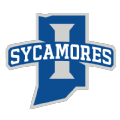
35. Indiana State Sycamores: It's always fun when Larry Bird's alma mater is involved in the field, and this Sycamores team certainly is. Indiana State's two losses came against Alabama and Michigan State, two teams expecting to make noise in March. Three players are averaging 15 or more points on the Sycamores' roster, with Isaiah Swope leading the team at 18.9 PPG. They're No. 10 in the nation in scoring with 86.5 PPG.
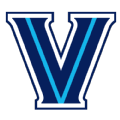
36. Villanova Wildcats: The Wildcats' nonconference featured some confusing losses (Penn and Drexel) and some signature wins (Maryland, Texas Tech and North Carolina) before they opened Big East play with a win at Creighton. They're 3-1 in a loaded Big East thanks in part to a balanced and deep roster. Which Villanova team will show up during the heart of conference play, the one that beat three straight Power 5 teams convincingly or the one that dropped three straight in early December?

37. Cincinnati Bearcats: Cincinnati headed into the first year of Big 12 conference play with a solid 11-2 record, but that loss at Xavier still stings. The conference did the Bearcats no favors as five of their first six games are against ranked opponents, so we'll know early how they stack up in their new home -- the Bearcats' first Big 12 game was a win at No. 12 BYU. Viktor Lakhin will be key for Cincinnati inside, but Cincy will need others to step up as well in a loaded Big 12.
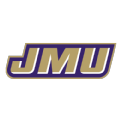
38. James Madison Dukes: James Madison picked up some impressive wins during nonconference play, including a season-opening 79-76 victory at Michigan State. The Dukes, who are fifth in the country in PPG (88.8), carried a 12-0 record into conference play, where they opened the Sun Belt slate with an 82-65 win over Texas State before Southern Miss handed them their first loss of the season. Terrence Edwards Jr. and T.J. Bickerstaff have combined for 33.0 points and 14.1 rebounds per game.

39. Utah Utes: Utah kicked off its final season in Pac-12 play with a 2-0 record featuring wins over Washington and Washington State -- two teams also in the current field. The Utes had put together a strong résumé with only two losses against Houston and St. John's before back-to-back losses against the Arizona schools. Center Branden Carlson leads the team in scoring (17.6 PPG) and rebounding (6.4 RPG) while also averaging over a block a game and shooting 37% from 3.

40. Princeton Tigers: A 68-61 win against in-state rival Rutgers to kick off the season set the tone for a stellar nonconference for the Tigers as they opened the season 9-0. A loss to Saint Joseph's is the only slipup so far on the schedule as they try to make a return trip to the NCAA tournament this season. Caden Pierce, who is nearly averaging a double-double, and Xaivian Lee (18.1 PPG) are players to watch on this team.

41. New Mexico Lobos: New Mexico has run up a good record so far this season, but so have a lot of Mountain West teams. Utah State (14-1), Nevada (14-1), San Diego State (13-2), Colorado State (13-2) and the Lobos (13-2) have had hot starts with conference play just underway. Richard Pitino's team is back at full strength, as the MW preseason all-conference duo of Jamal Mashburn Jr. and Jaelen House have played in just four games together this season. The Lobos' picture will become clearer during the next week when they play San Diego State and Utah State.

42. Texas Longhorns: The only blemishes on Texas' nonconference schedule came against top-10 Big East competition (UConn and Marquette), and the Longhorns entered their final season of Big 12 play on a five-game winning streak. A loss to Texas Tech derailed some momentum, but they currently have five players averaging double digits in scoring, led by Max Abmas at 17.2 PPG.

43. Dayton Flyers: The Flyers' only losses this season have come to a tough Northwestern team and a top-10 Houston team, and they've picked up solid wins against LSU, St. John's and Cincinnati -- two of which are currently in the field. DaRon Holmes II is an NBA draft prospect who is averaging 17.7 PPG and 6.9 RPG while shooting over 41% from 3.
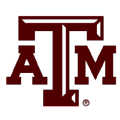
44. Texas A&M Aggies: The Aggies do crash the boards, leading the country by rebounding 45% of their own misses. A&M opened SEC play with a troubling home loss against LSU -- in which the Tigers beat the Aggies to the boards at both ends of the court. Wade Taylor IV is at 18 PPG, but the Aggies will need more than Taylor if Buzz Williams' team is to reach 25 wins again this season.

45. Mississippi State Bulldogs: The Bulldogs dropped their SEC opener to South Carolina. It won't get easier for State anytime soon, as Tennessee, Alabama and Kentucky loom in its next three games. Mississippi State is known for its strong defense under Chris Jans, but it's no coincidence that all three of its losses came when scoring 65 points or fewer. Offensive flow is a problem at times. Having Tolu Smith back from a foot injury should help put the ball in the basket, at least on the interior. Perimeter shooting remains an issue, outside of freshman sixth man Josh Hubbard (14.4 PPG, 38% on 3s).

46. Nebraska Cornhuskers: Nebraska was off to its best start under Fred Hoiberg, a 7-0 run to begin the season, before a loss to rival Creighton derailed the momentum. The Huskers picked up another loss to Minnesota but righted the ship with four straight wins, including notable W's against Michigan State and at Kansas State. They sit at 2-2 in the conference.
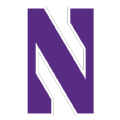
47. Northwestern Wildcats: Northwestern is a tough one to figure out. The Wildcats can beat Purdue one week, then two games later drop one to Chicago State, only to control Michigan State in a convincing 15-point win a few weeks later. Senior guard Boo Buie is averaging 18 PPG and nearly 5 APG, giving the Wildcats a steady hand and leadership at the end of close games. Northwestern is 7-0 when limiting opponents to 65 or fewer points.

48. Grand Canyon Lopes: Tyon Grant-Foster is off to a sizzling start for the Lopes, averaging 20.7 PPG, 5.6 RPG and 1.9 APG. Gabe McGlothan is adding 13.9 points and 7.9 rebounds per game as Grand Canyon is out to a 14-1 start with the lone loss to a talented South Carolina team.
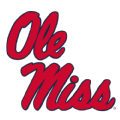
49. Ole Miss Rebels: Few teams can say they battled through the nonconference slate unbeaten, but Ole Miss is one of them. The Rebels' reward for a 13-0 record? A conference opener date at No. 5 Tennessee, which they lost 90-64. Still, it's been quite a start for Ole Miss, with wins over several Power 5 teams.
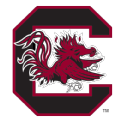
50. South Carolina Gamecocks: South Carolina's lone loss this season came to a talented Clemson team, and anything can happen in a rivalry game. Outside of that, the Gamecocks are 12-0, including a current six-game win streak. Meechie Johnson makes things go at the guard position, averaging 18.2 PPG, while fifth-year senior B.J. Mack is continuing his excellent college career with 13.4 PPG and 5.1 RPG.

51. Oregon Ducks: With six players averaging double-digit scoring and a 4-0 start to Pac-12 play, things are looking pretty sunny in Eugene. Jackson Shelstad and Jermaine Couisnard combine to make an offensive, effective backcourt for the Ducks, who are eyeing their first NCAA tournament trip since 2021.
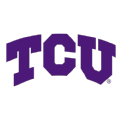
52. TCU Horned Frogs: The Horned Frogs had a nice run through the nonconference with the only losses coming to a ranked Clemson team and a tough Nevada squad. Three straight games against Kansas (an 83-81 loss), Oklahoma and Houston in mid-January will be telling for TCU, but an 11-3 record and Emanuel Miller's start to the season are both positives for Jamie Dixon.

53. St. John's Red Storm: Rick Pitino's first season at St. John's has already had its ups and downs. Losses to Dayton, Boston College and Michigan hurt the Red Storm's momentum early on, but a recent close loss to defending champion UConn and an 11-4 overall record have hopes high in Queens.

54. Washington State Cougars: Much like archrival Washington, Washington State's start to the Pac-12 conference season was marred by back-to-back losses to Utah and Colorado. Forward Isaac Jones has been the Cougars' most consistent player thus far, with 14.1 PPG and 7.1 RPG, and he picked up a double-double in the loss at Utah.

55. Washington Huskies: A win over a top-10 Gonzaga team in the nonconference goes a long way for Washington and its fans, but is it enough to overshadow a slow start overall? The Huskies are just 9-6 after three losses to Mountain West competition and a 1-3 start to Pac-12 play. To bounce back and settle into conference play, Washington will lean on forward Keion Brooks Jr., who is leading the team in PPG (20.5) and RPG (7.4).

56. Kansas State Wildcats: The Wildcats possess a close win over Villanova -- a common theme, as they are 4-0 in overtime this season -- and their recent rout of UCF made observers take notice of a team that seems to be progressing after scoring just 46 points in a home loss to Nebraska. Cam Carter, Tylor Perry and Arthur Kaluma are carrying the load, and are all averaging 35 minutes a game and scoring over 15 PPG. In the next month, games against Baylor, Houston, Oklahoma, Kansas and BYU loom.
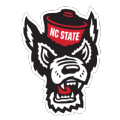
57. NC State Wolfpack: The Wolfpack had a couple of tough losses against Power 5 competition during the nonconference slate but entered ACC play with a 9-3 record before back-to-back wins. DJ Horne is leading NC State with 14.4 PPG and shooting over 42% from 3. Three other Wolfpack players averaged double-digit scoring over the first 14 games of the season.
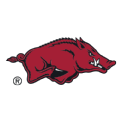
58. Arkansas Razorbacks: Outside of an early loss to UNC Greensboro, the Razorbacks put together a strong nonconference with each loss coming to a quality opponent. The highlight for the first two months was a big win over Duke that turned the tide on the season. Tramon Mark is leading the team with 16.5 PPG, and Washington transfer Keyon Menifield Jr. appears to be fitting in quite well after his waiver with the NCAA finally came through Dec. 15.
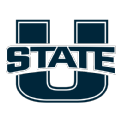
59. Utah State Aggies: The Aggies' lone loss this season came all the way back on Nov. 11, a 72-66 overtime loss at Bradley as players were getting accustomed to the season. Since then, Utah State has put together a 13-game win streak with the aptly named Great Osobor scoring 18.5 PPG. The Montana State transfer is also leading the team with 9.5 RPG as a force inside the paint on both ends.
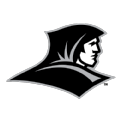
60. Providence Friars: Two losses to Big 12 opponents did little to slow down the Friars' hot start, as they were 11-2 before back-to-back losses recently slowed down the hype. Wins over Wisconsin and Georgia were nice, but a 72-57 win against Marquette to kick off Big East play has been the highlight of Providence's season. Devin Carter and Bryce Hopkins have combined for 32.4 PPG and 16.8 RPG at this point in the season.

61. Pittsburgh Panthers: The Panthers picked up their first conference win of the season at lowly Louisville -- which is a tough couple of words to write. The Panthers began the season eager to prove their return to the NCAA tournament last year for the first time since 2016 wasn't a one-off. That appears to be a tough hill to climb after that 0-3 start in the ACC. Senior forward Blake Hinson is at 19 PPG and over 40% beyond the arc, and freshman point guard Carlton "Bub" Carrington has been a consistent factor.
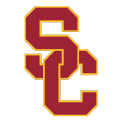
62. USC Trojans: Yes, Bronny James has returned from an incredible health scare to play for the Trojans. James is a lot of what we see and hear. But so far this season, it's the starting backcourt of Boogie Ellis and Isaiah Collier that makes the Trojans a tough matchup for anyone. After losing five of six games, USC has now won two straight at home. Collier, the top recruit in this season's freshman class, remains toward the top of NBA draft boards.
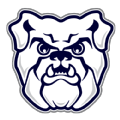
63. Butler Bulldogs: The Bulldogs picked up several wins over Power 5 competition during the nonconference schedule, including Penn State, Texas Tech and Cal. Three of their five losses are to ranked opponents, but the tough slate over the first few months of the season should have prepared them for the rest of the Big East slate. Three players are averaging over 12 PPG for Butler, with Pierre Brooks leading the way at 16.5.
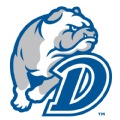
64. Drake Bulldogs: The Bulldogs are out to a 12-3 start, but the nonconference left something to be desired from a competition standpoint. It's hard to pinpoint Drake's best win so far, but it's also hard to miss Tucker DeVries, who is leading the team in scoring (18.8 PPG) and assists (3.8 APG). Atin Wright's 15.1 PPG makes the Bulldogs backcourt tough to cover for any opponent.
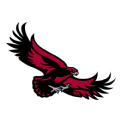
65. Saint Joseph's Hawks: A frustrating loss to Charleston ended a six-game win streak for the Hawks, who beat Villanova and Temple back-to-back during the nonconference slate. Erik Reynolds II leads Saint Joseph's with 16.9 PPG, and four other players on the roster are averaging 11 or more points per game this season on a balanced roster.

66. Appalachian State Mountaineers: The highlight of the Mountaineers' nonconference schedule was a convincing 69-64 win against Auburn, which came in the middle of an eight-game win streak that set the tone for the season. Donovan Gregory and TreVon Spillers will need to continue their hot starts as App State navigates Sun Belt play.
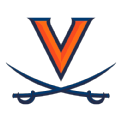
67. Virginia Cavaliers: Each of the Cavaliers' four losses this season have been by 16 or more points. The good news? Virginia is 11-0 outside of those hiccups. The Cavaliers have also picked up wins against a ranked Texas A&M team, Syracuse, West Virginia and Florida in Tony Bennett's 15th season at the helm in Charlottesville.

68. SMU Mustangs: The Mustangs went on a four-game roll before dropping a close game to Memphis. The Mustangs pride themselves on defense: second in the nation in opponents' FG percentage (36.6%) and eighth in PPG allowed (61.7).
What a run for @BoilerBall 🤯 pic.twitter.com/tn6Oy0B49q
— NCAA March Madness (@MarchMadnessMBB) January 6, 2024
The Bilastrator's Early-Season All-America Teams
FIRST TEAM
• Zach Edey, Purdue
• Hunter Dickinson, Kansas
• Kevin McCullar Jr., Kansas
• Kyle Filipowski, Duke
• Tyler Kolek, Marquette
SECOND TEAM
• Jaedon LeDee, San Diego State
• PJ Hall, Clemson
• RJ Davis, North Carolina
• Tristen Newton, UConn
• Johni Broome, Auburn
The Bilastrator's Early-Season All-Freshman Team
• Malik Mack, Harvard
• Reed Sheppard, Kentucky
• Isaiah Collier, USC
• Aden Holloway, Auburn
• Ja'Kobe Walter, Baylor
The Bilastrator's Early-Season Mid-Major All-America Team
• Isaiah Stevens, Colorado State
• Xaivian Lee, Princeton
• Tyon Grant-Foster, Grand Canyon
• Xavier Johnson, Southern Illinois
• Johnell Davis, Florida Atlantic
